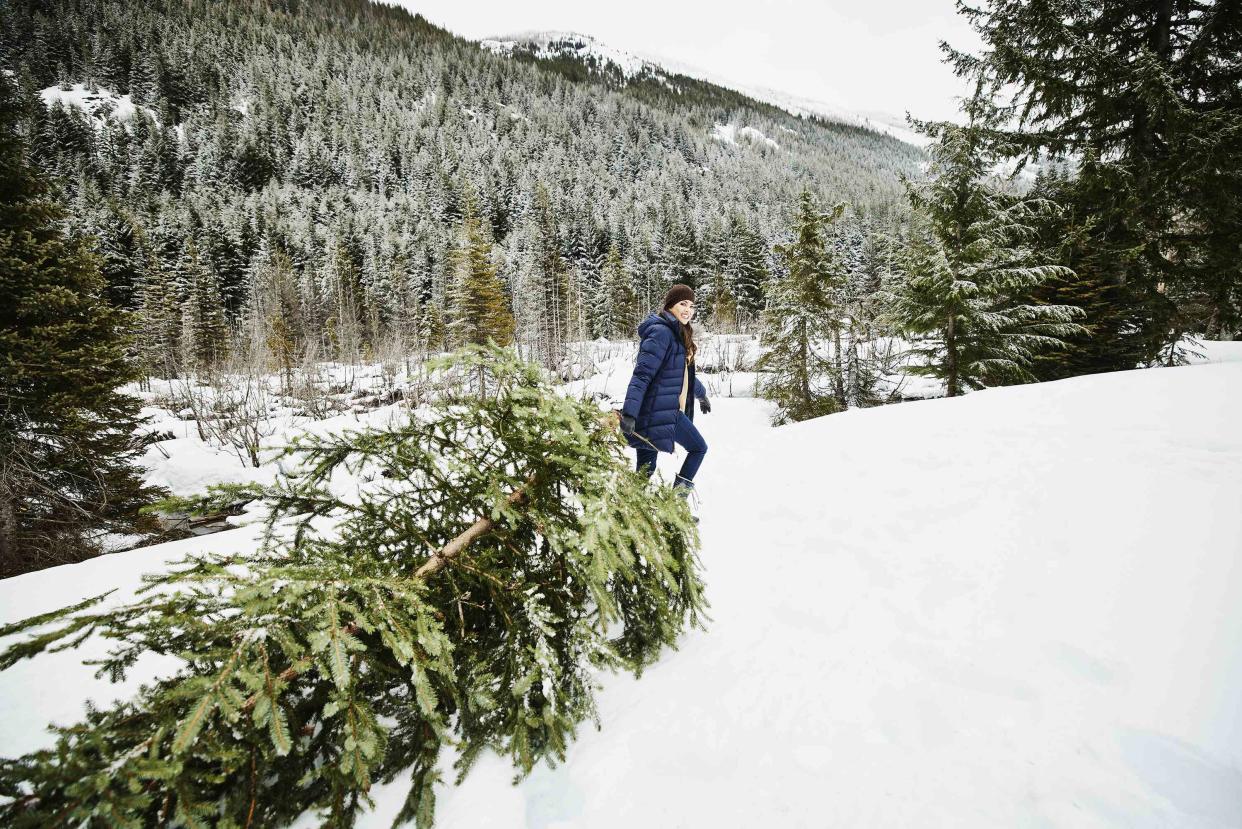How to Save Money By (Legally) Cutting Your Own Christmas Tree
Get an almost-free permit from the USDA Forest Service and help maintain good forest health.

Thomas Barwick/Getty Images
While the majority of Christmas tree owners have switched to artificial, a good 32.6 percent still opt for real, living trees. From the process of going to pick out the tree to the fresh scent it brings to the house, real trees can provide family tradition that's hard to give up. What's not so romantic about buying a real Christmas tree, however, is the price. According to data from the National Christmas Tree Association, the average cost of a real Christmas tree in 2020 was $81—and the forecasted average for 2022 is $85.59.
You can often shave down that price a little bit by going to a cut-your-own tree farm, but it can still be a pricey endeavor. On the other hand, some Christmas movies may have you believe you can just go to a woodsy area and chop down a tree of your choosing for free (like when Buddy the Elf cut down a tree in Central Park) but, in real life, that's definitely illegal. Good news, though, there is a government-approved way to cut your own tree—and save a significant amount of money while you're at it.
Keep reading to learn more about how a Christmas tree permit can help you keep family traditions alive and cut down on your holiday spending.
:
How to get a permit to cut your own Christmas tree
The USDA Forest Service sells Christmas Tree permits online with prices ranging from $5-$20. (That price could save you as much as $80 per tree, or more, depending on the size of tree you would normally buy at a farm or lot.) Head to recreation.gov/tree-permits to find a permit for a participating forest near you. It's important to note that not all states have participating forests, and the majority of the locations are in the Western United States. However, if you live in this region, you're in luck, because some states, like California and Idaho, have as many as 10 or more participating forests spread throughout the border lines.
Each permit has stipulations about the price per tree (in that $5-$20 range), the maximum number of trees you can sign up to cut down, and the maximum tree and stump height of the trees you're able to take. The website also shares guidelines for how to safely choose and cut your tree, as well as how to plan your trip to the forest. As the site states, you must also be sure to print and bring your permit with you.
Benefits of cutting your own Christmas tree
One of the major talking points in the debate between real vs. artificial Christmas trees is the question of which option is better for the environment. However, while it may seem counterintuitive, cutting down trees can actually be a good thing. Christmas tree permits through the USDA Forest Service are part of an initiative to maintain overall forest health. Through these permits, you can help thin densely populated stands of small-diameter trees, which, as the site states, are "the perfect size for a Christmas tree."
Just like prescribed burns and the removal of forest debris, the thinning of forest trees is a tool to reduce fire risk in national forests. According to the USDA Forest Service, "It is used to restore more natural forest structure with a focus on tree density, tree species distribution, tree age distribution and natural gaps in the canopy. Additionally, reduction of the number of trees reduces stress and competition in forested areas susceptible to insect and disease."
So, when you go get your tree from Mother Nature this year, you'll be giving back to her at the same time. Just make sure to purchase your permit soon, as they can sell out.
:
For more Real Simple news, make sure to sign up for our newsletter!
Read the original article on Real Simple.
